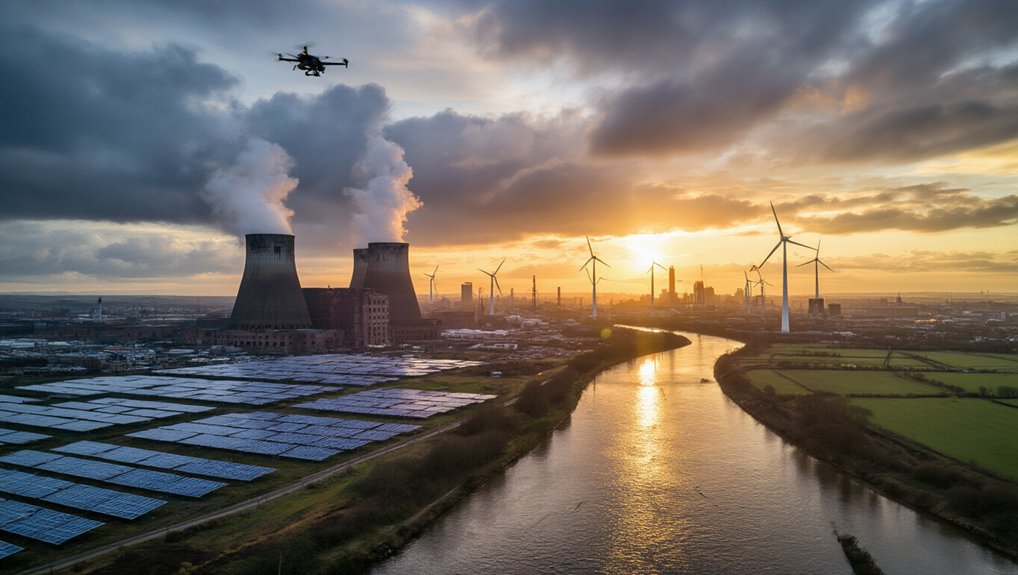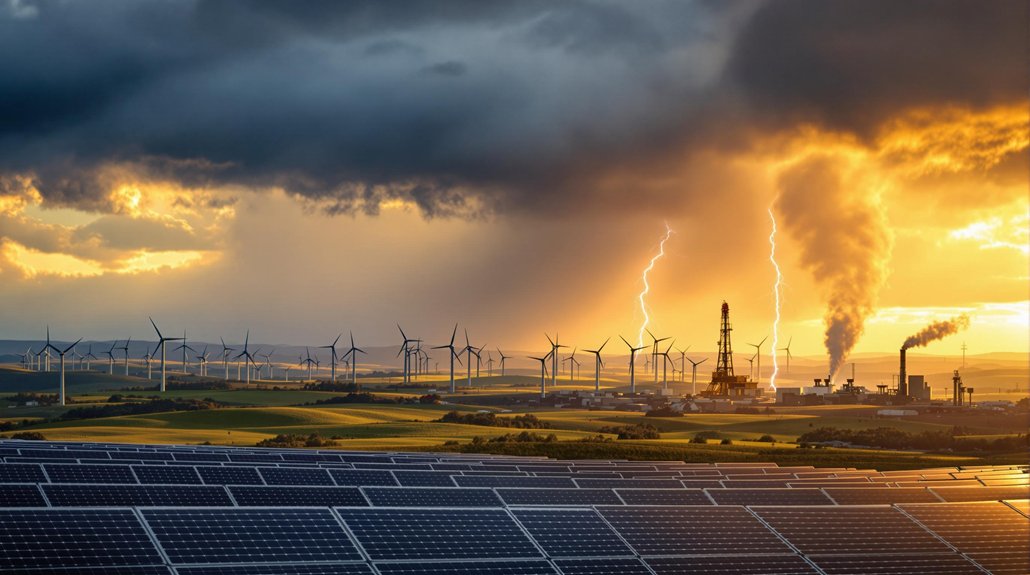Nearly all of Britain’s coal-fired power plants have gone up in smoke—and that’s a good thing. The UK has slashed coal emissions from electricity generation by a whopping 99% between 2008 and 2024. Next year? Zero. Zilch. Nada. This remarkable achievement is part of a broader success story: the UK has halved its territorial greenhouse gas emissions since 1990.
Progress isn’t just about what’s gone. It’s about what’s coming. Clean power is surging ahead with updated windfarm planning rules and ambitious 2030 targets. Over 7,000 businesses are already benefiting from measures making electricity more affordable. The Climate Change Committee (CCC) is “more optimistic” following recent policy improvements and the government change in 2024.
But let’s not pop the champagne just yet. Only 38% of emissions cuts needed for 2030 are backed by credible policies. Sure, that’s better than the pathetic 25% from two years ago, but still. The math isn’t complicated—62% remains unsupported. “Significant risks” to meeting targets persist.
The UK’s 2030 nationally determined contribution falls just 2% short of a 1.5°C-compatible pathway. Not terrible. The 2035 target—an 81% reduction—aligns with Paris Agreement goals. But alignment means nothing without action.
Some sectors are dragging their feet. Agriculture, land use, and shipping are moving at a glacial pace—ironically, while actual glaciers are melting faster than ever. Building emissions remain stubbornly high. Transport and industry need stronger policies, particularly for smaller businesses that aren’t getting the support they need.
The CCC’s top recommendation is crystal clear: reduce electricity prices to support electrification across heat, transport, and industry. Current domestic electricity prices are four times higher than gas prices, creating a significant barrier to adoption. Without stable policy direction, investments will stall.
The UK has traveled halfway to its climate destination. Not bad. But the second half of the journey? That’s where the real challenge begins. The path is mapped. The question is whether there’s enough fuel in the political tank to reach the finish line. Electric vehicle adoption has shown promising momentum with EVs doubling in just two years, providing a bright spot in the transport emissions reduction effort. The ongoing fossil gas crisis has added approximately £700 to average annual energy costs since 2021, highlighting the economic vulnerability of fossil fuel dependence.
References
- https://www.carbonbrief.org/?p=58005
- https://energysavingtrust.org.uk/climate-change-committee-report-response/
- https://committees.parliament.uk/committee/664/energy-security-and-net-zero-committee/news/207971/esnz-chair-comments-on-climate-change-committees-latest-assessment-of-government-progress-on-reducing-uk-emissions/
- https://www.corporateleadersgroup.com/news/clg-uk-rapid-reaction-climate-change-committees-2025-progress-report-emissions-reduction
- https://climateactiontracker.org/countries/uk/









